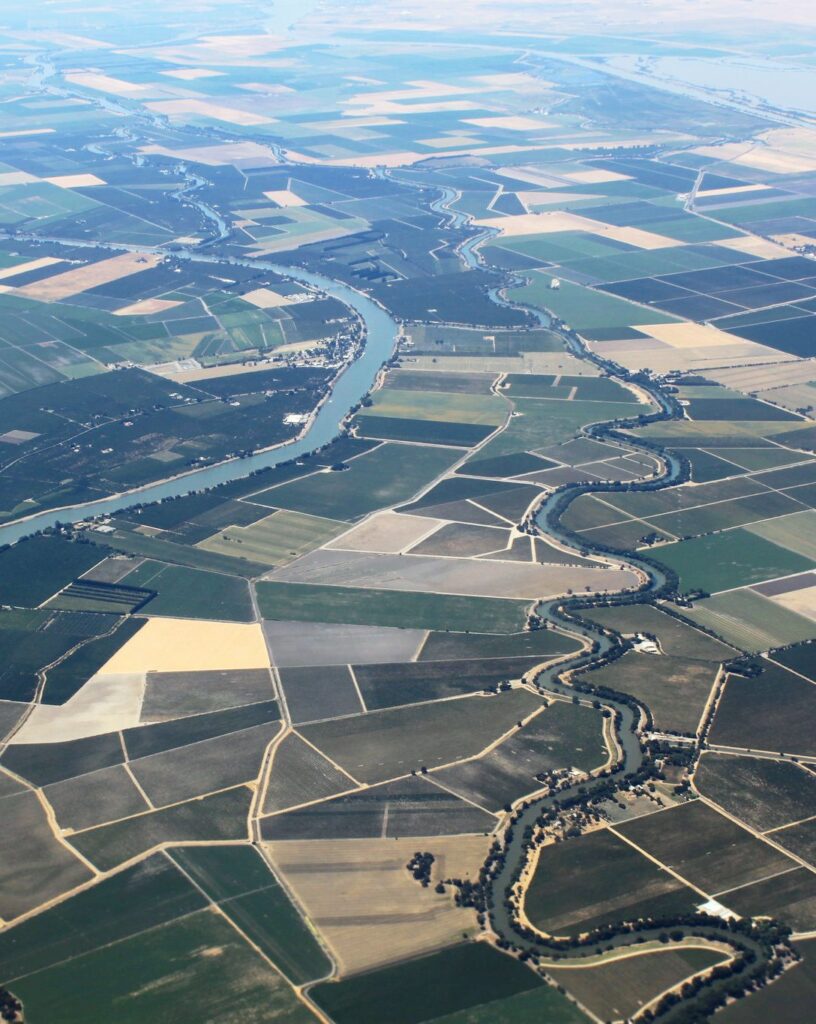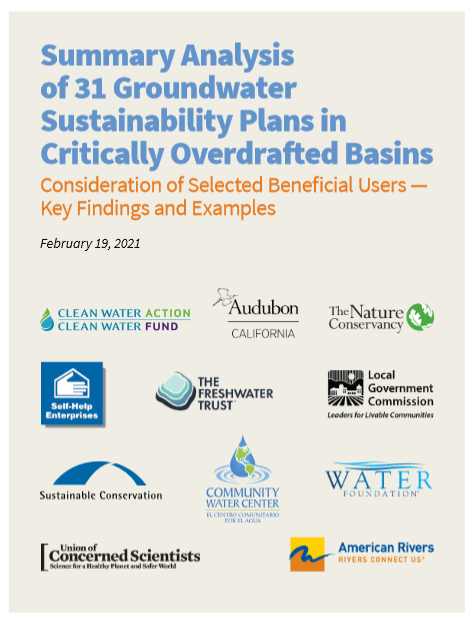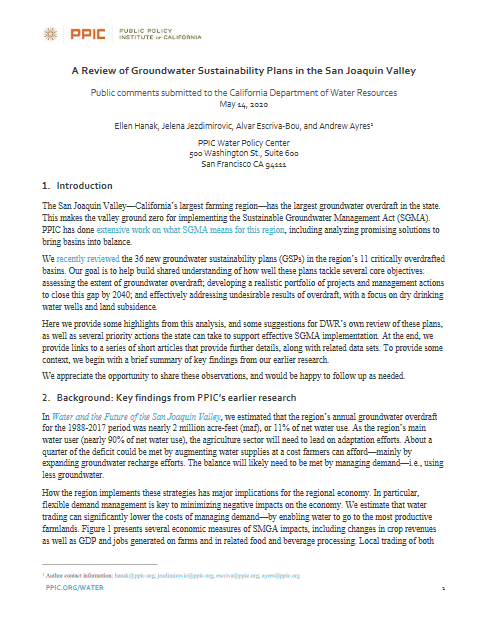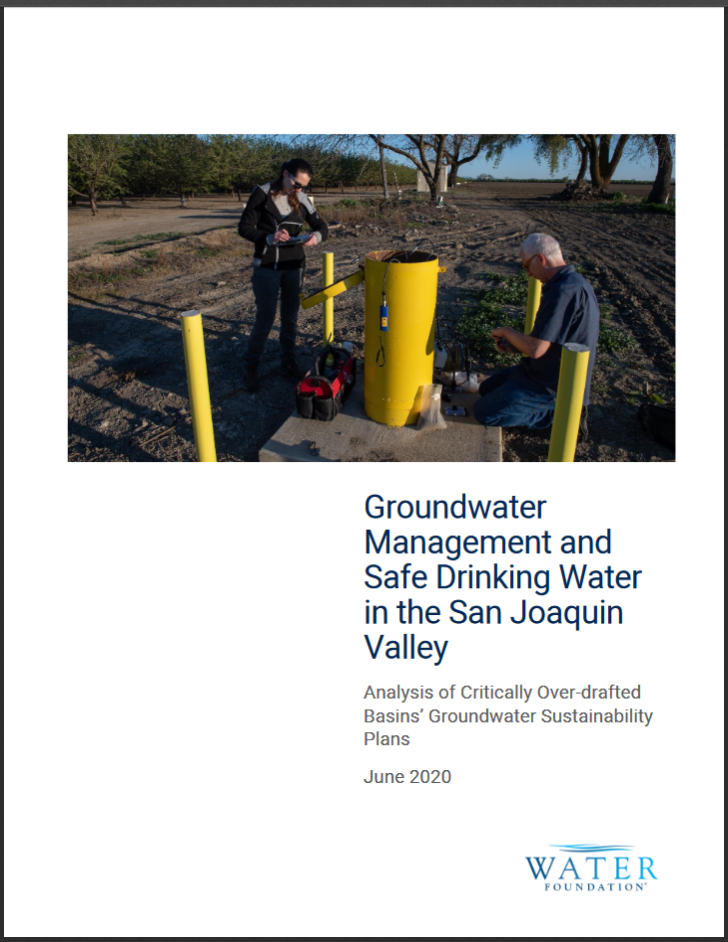Groundwater Sustainability Plans (GSPs) for those groundwater basins designated as critically overdrafted were submitted to the Department of Water Resources in January 31, 2020. SGMA defines a basin as critically overdrafted “when continuation of present water management practices would probably result in significant adverse overdraft-related environmental, social, or economic impacts.”
The GSP is a roadmap for how a basin will avoid the adverse effects of overdraft and achieve balanced levels of groundwater to reach sustainability within 20 years.
The GSPs submitted in 2020 give a first look at how Groundwater Sustainability Agencies (GSAs) are planning their paths to sustainability and to highlight the successes and deficiencies in the submitted plans.
Below are analysis from NGOs on the 2020 GSPs.

NGO Analysis of 31 GSPs in Critically Overdrafted Basins
A group of NGOs collectively reviewed 31 out of the 46 total GSPs that were developed for critically overdrafted basins.
The reviews were prioritized towards those GSPs that were considered to be of high priority by our organizations due to the presence of: (1) small drinking water systems, (2) groundwater dependent ecosystems (GDEs), and (3) DACs.
Prioritization also considered coverage and interest by our respective organizations, with the goal of selecting at least one GSP per critically overdrafted basin.
A Review of Groundwater Sustainability Plans in the San Joaquin Valley
The PPIC reviewed the 36 new groundwater sustainability plans (GSPs) in the region’s 11 critically overdrafted basins.
Our goal is to help build shared understanding of how well these plans tackle several core objectives: assessing the extent of groundwater overdraft; developing a realistic portfolio of projects and management actions to close this gap by 2040; and effectively addressing undesirable results of overdraft, with a focus on dry drinking water wells and land subsidence.
Here we provide some highlights from this analysis, and some suggestions for DWR’s own review of these plans, as well as several priority actions the state can take to support effective SGMA implementation.
At the end, we provide links to a series of short articles that provide further details, along with related data sets. To provide some context, we begin with a brief summary of key findings from our earlier research.
Groundwater Management and Safe Drinking Water in the San Joaquin Valley
The Water Foundation commissioned an analysis of 26 GSPs in the San Joaquin Valley to understand how private domestic drinking water wells in the region will be affected on the path to sustainability.
Among its key findings, the analysis estimates that the goals in these San Joaquin Valley GSPs, if not proactively addressed, will result in:
- Between roughly 4,000 and 12,000 partially or completely dry drinking water wells by 2040
- Between roughly 46,000 and 127,000 people who lose some or all of their primary water supply by 2040
- Between $88 million to $359 million in costs to restore access to drinking water
Additional resources
- Commentary: How to Address Groundwater Planning Gaps, from the PPIC, June 16, 2020.
- Planning for groundwater sustainability accounting for uncertainty and costs: An application to California’s Central Valley, from the Journal of Environmental Management, June 2020
- Lessons Learned from the State’s first Groundwater Sustainability Plan, from the Local Government Commission



